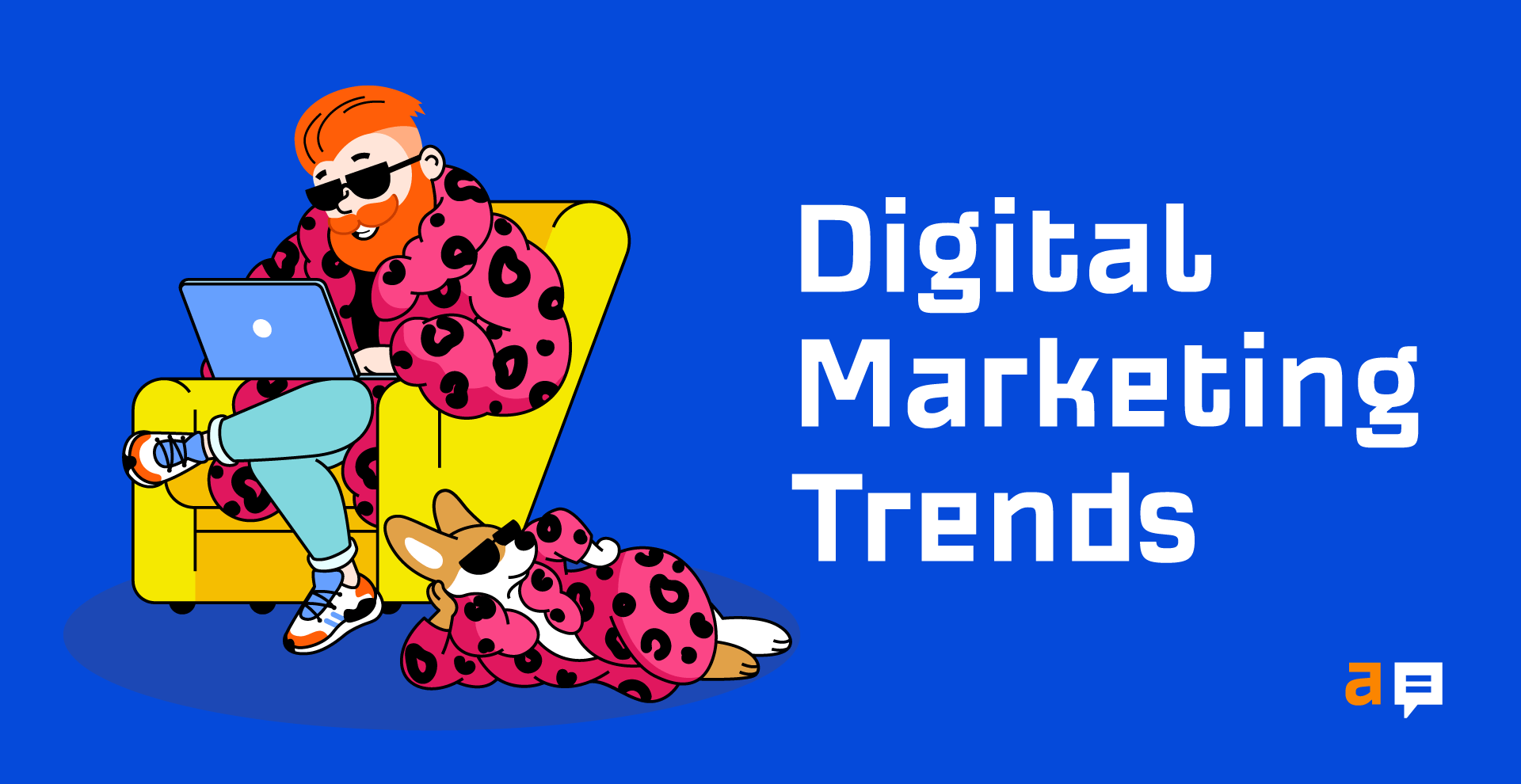Marketing is changing faster than ever. Those of you who aim to become T‑shaped marketers or who manage entire marketing departments know it best. Chasing after the latest marketing fads may provide some short-term results, but marketing strategies can’t rely on that.
For long-term marketing planning, you need strong foundations: strategies and tactics that have shown good results in the past and are likely to do so in the future. After all, marketing activities thrive on iterations. And the more time you put into something, the better you become at it.
That’s why in this collection of digital marketing trends, we’ve focused on eight trends that aren’t just industry fads but general directions that marketing is heading toward in 2022 and beyond.
In this article, we’ll talk about the following:
- Search intent is king
- Word of mouth is still a trend
- Privacy factors will impact digital advertising
- Omnichannel marketing is a must
- Video is an essential marketing channel
- Data changed marketing for good
- Frictionless experience is ideal for customers
- Remote work is here to stay
Search intent refers to the reason behind a search. Google tries to understand the meaning of our search queries and the category of information we’re trying to find.
For example, Google ranks guides the highest for an informational intent query like “how to tune a guitar.”
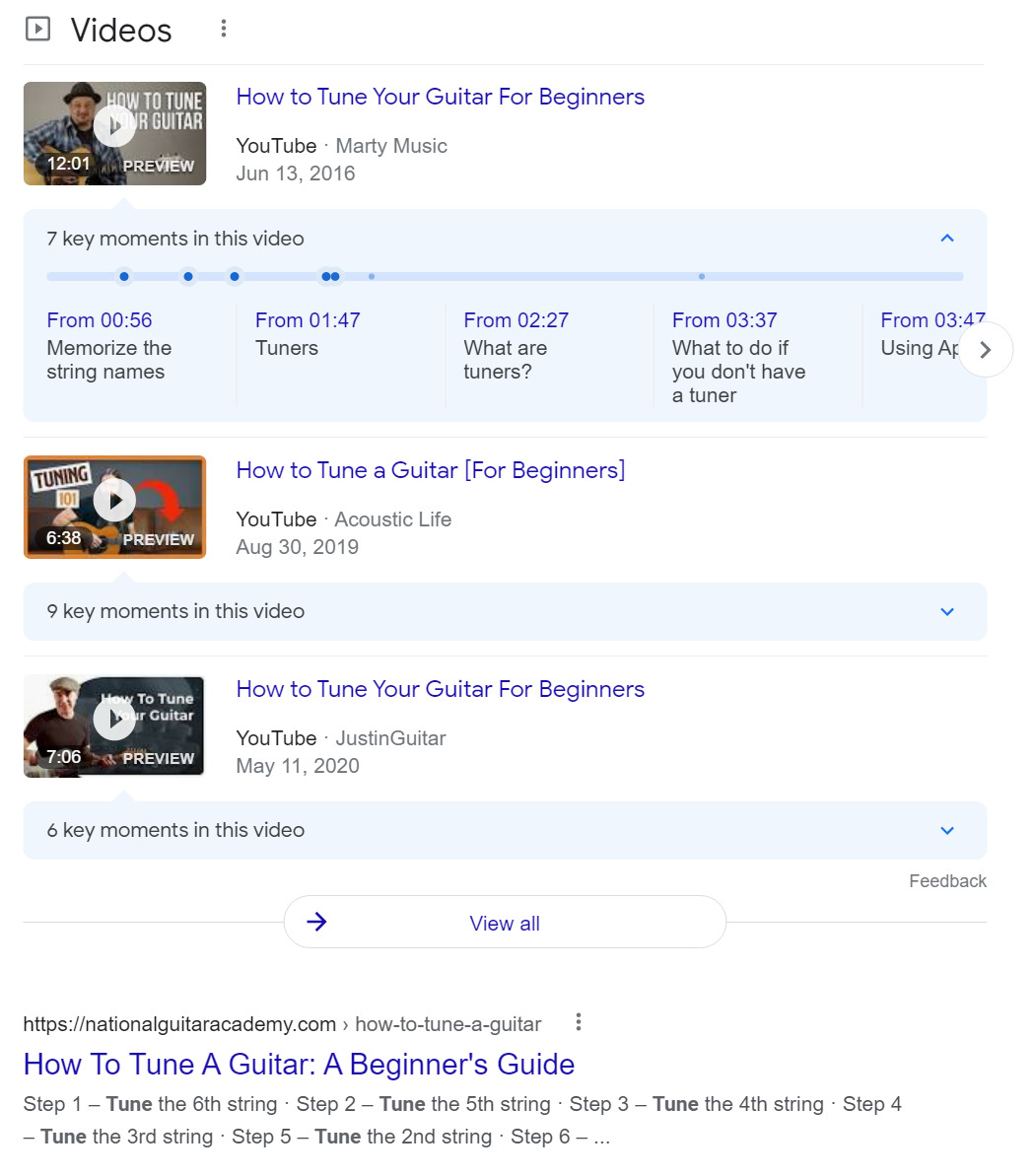
On the other hand, for a transactional query like “amazon,” Google knows a user is trying to navigate to the ecommerce website most relevant to their location (as opposed to finding information about the Amazon river).

Google believes in optimizing for humans, not algorithms. In fact, some of Google’s sophisticated machine learning algorithms like BERT or MUM are introduced to make the search engine “more human.” That is, the search engine should understand information as well as humans.
There are many recognized trends in SEO, but search intent is and will probably remain king. After all, it’s the core of Google’s business.
What to do about it
Design and optimize content with search intent in mind. This comes down to looking at the search result pages for a particular query and identifying the three Cs of search intent:
- Content type – What is the overall type of content? Is it a blog post, product page, or video? For instance, this very article is a blog post.
- Content format – Some common formats include how-to guides, list posts, reviews, comparisons, etc. The article you’re reading right now is a list post.
- Content angle – The unique selling point of the content piece. For example, “best,” “cheapest,” and “freshness.” Can you guess what the angle of this article is?
Once you identify the three Cs of search intent, you should have a pretty good idea of what type of content Google “recommends” to its users for particular search queries.
Recommended reading: What is Search Intent? A Complete Guide for Beginners
Word of mouth (WOM) is the “invisible force” behind many brands’ successes and the unsung hero of converting prospects to customers. Here’s some data to illustrate my point:
- 83% of respondents from 60 countries trust recommendations from friends and family, and 66% trust online recommendations (Nielsen).
- 74% of purchasers (auto, beauty, and smartphone categories) identify word of mouth as the main point of influence for purchasing decisions (Google, TNS, & Ogilvy).
At Ahrefs, we find that to be true and recently ranked word of mouth as one of the top three customer acquisition channels.
Thanks to online media, that “invisible force” of WOM—otherwise harder to notice and measure—has become quite tangible. We can witness it in the following:
- Social media – WOM is seen in both conversations and sharing of content.
- User-generated content about brands and their products – Customer reviews, unboxings, or fan pictures posted on Instagram are great examples.
- The proliferation of influencer marketing – While influencer marketing is a marketing type of its own, the fact that’s been working so well is based on the same mechanics as WOM: People trust other people more than brands.
What to do about it
First, create a great product or service. Without one, you won’t go far. You should have something that exceeds expectations. Make it change the users’ lives for the better.
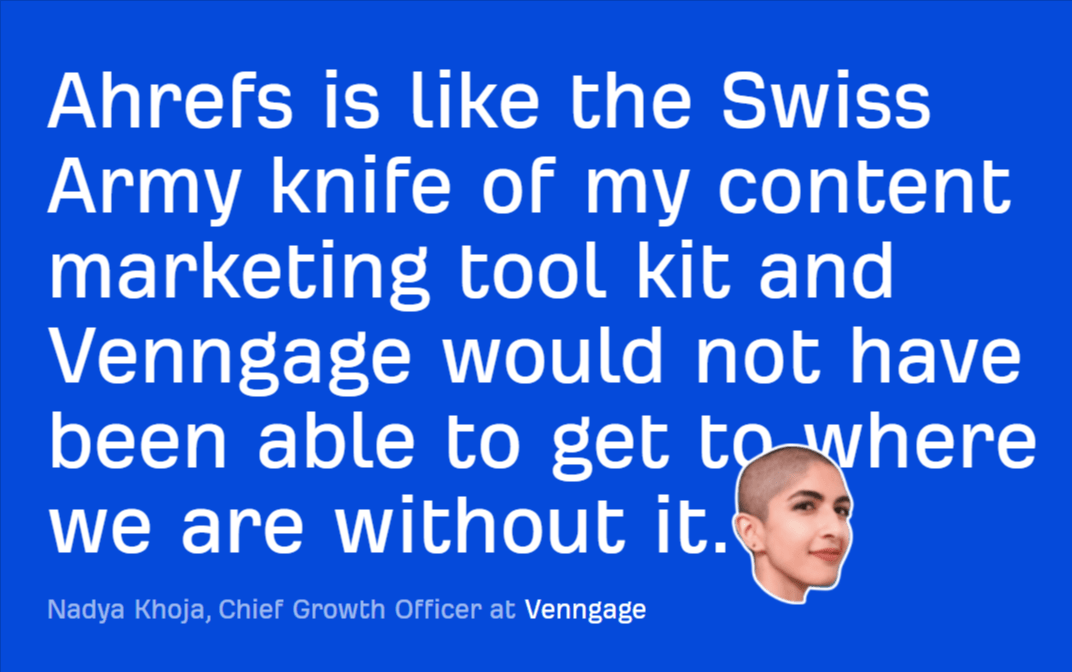
If people truly like your product, they will start expressing it. You can potentially affect the velocity and scale of that process through some marketing tactics, such as:
- Encouraging users to share pictures or short videos of your product under a specified hashtag.
- Creating content that appeals to the reasons why people share on social media.
- Sharing positive testimonials about your business (but don’t brag).
- Sharing your product reviews.
- Engaging in conversations. Or even starting them. Caution: This can be scary. You have very little (if any) control over such situations, but courage and transparency go a long way in the marketing world. Plus, you can learn a great deal from the feedback you’ll receive.

Every two years on the same day, our CMO asks the good people of Reddit the same question, “Do you like what we do?”
Fact 1. Safari and Firefox browsers already block third-party cookies by default. In case you’re wondering, third-party cookies are small text files set by a website other than the one you are visiting, mostly used to track users between websites (and show retargeting ads, for example).
Fact 2. Google planned to stop supporting third-party cookies in Chrome by 2022. Then delayed it until 2023.
Fact 3. Starting from iOS 14, Apple began requiring a voluntary opt-in for the Identification for Advertisers (IDFA) from its users. Translation: Companies, such as Facebook, won’t “track you across apps and websites” unless you explicitly give them permission.
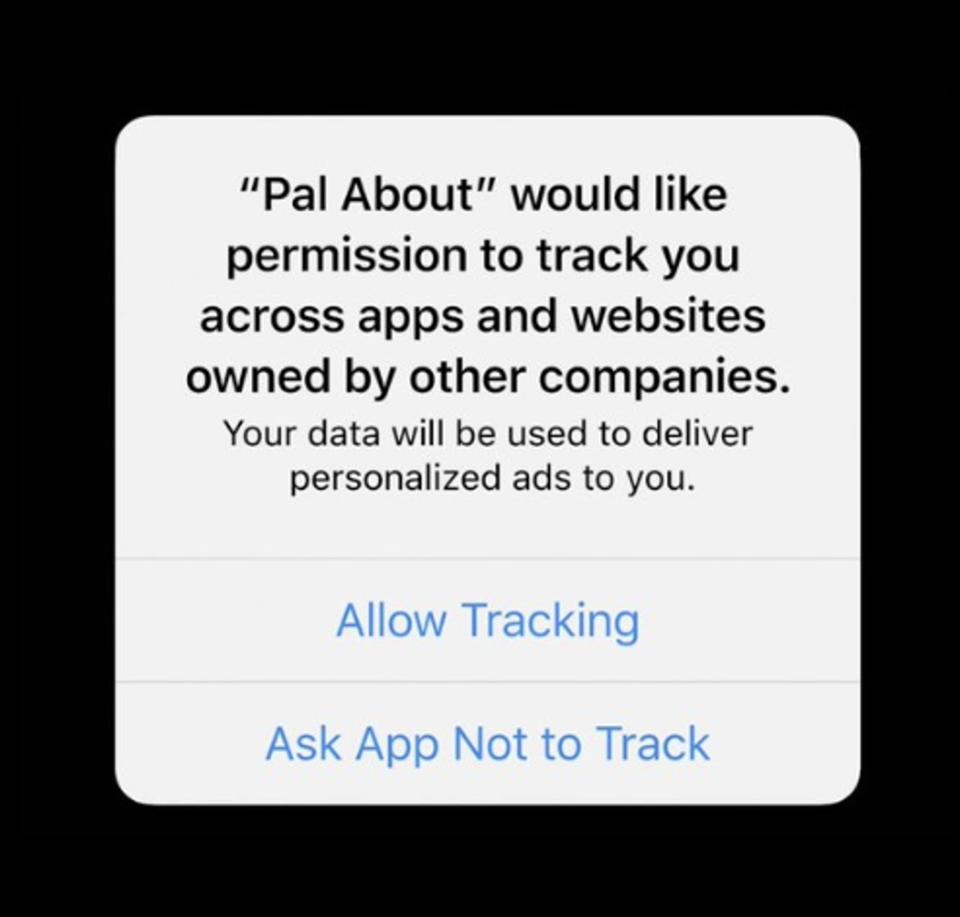
Source: Apple Insider
If that’s not enough:
- 42.7% of internet users worldwide use ad blockers (Hootsuite).
- Half of Americans have decided not to use a product or service because of privacy concerns (Pew Research).
- There is a proliferation of products built with security and privacy in mind, designed to “rescue” you from the data-harvesting monopolies. Examples: DuckDuckGo, Brave, Signal, ProtonMail, and Blockchain smartphones.
All this information paints a rather clear picture. Internet users will, theoretically, have more privacy when browsing the web. As a result, marketers will have fewer data points about potential customers, maybe even fewer advertising options, and more headaches when it comes to assigning ad attribution.
Most marketers already anticipate the moves made by Google and Apple will have a significant impact:

Source: Epsilon.
What to do about it
Digital advertising won’t go away because of the “cookie apocalypse.” Here’s why:
- Let’s not forget that Google relies mostly on ad revenue. In fact, it is already working on a new browser-based tracking standard called Federated Learning of Cohorts (FLoC). So if we take Adroll’s advice (one of the biggest companies in the adtech business), until that happens, it’s business as usual.
- Big publishers are steering away from third-party ad solutions in favor of their own data aggregation and ad selling, e.g., Insider’s SAGA platform.
- We may even see wide adoption of Unified ID 2.0 (developed by The Trade Desk and the IAB Tech Lab), which appears to resemble third-party cookies.
- While Facebook took a blow after undermining the IDFA, Apple’s own ad solutions suddenly became more attractive. Looks like one man’s loss is another man’s gain.
So it seems brands that want to use online advertising after 2023 will still have plenty of options. The only hurdle here is that they will have to adapt to the new standards and different forms of advertising (like buying ads directly from publishers).
However, some brands are already impacted by privacy factors, seen in declining ad clicks and lower returns on ad spend on Facebook.
Others, acting like smart investors, are already taking measures to diversify their marketing channels. Privacy measures or not, it’s a good idea to invest in omnichannel marketing, as we’ll see in the next section.
So what are the alternatives here? If you want to learn how you can grow by taking advantage of other marketing channels and minimum paid traffic, read our article below.
Recommended reading: 8 Effective Marketing Channels in 2021 (And How We Use Them)
Omnichannel marketing is about giving customers or prospects access to your products, offers, and support services on all channels, platforms, and devices.
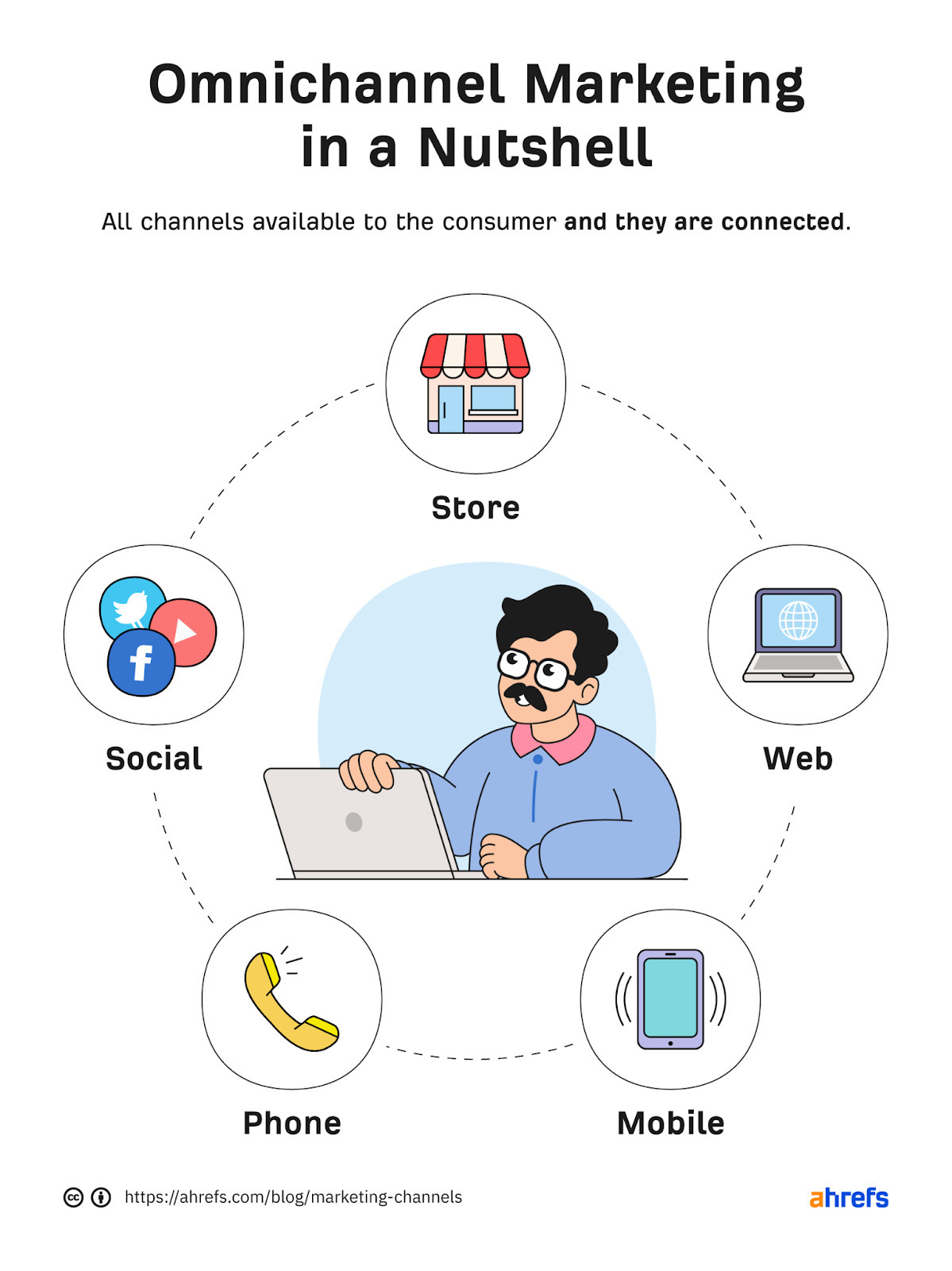
This trend can easily be observed in commerce. For example, IKEA allows you to order through an online store, a mobile app, a phone call, or a visit to a local store.
What’s more, IKEA offers every possible contact option, including a live chat with a chatbot.
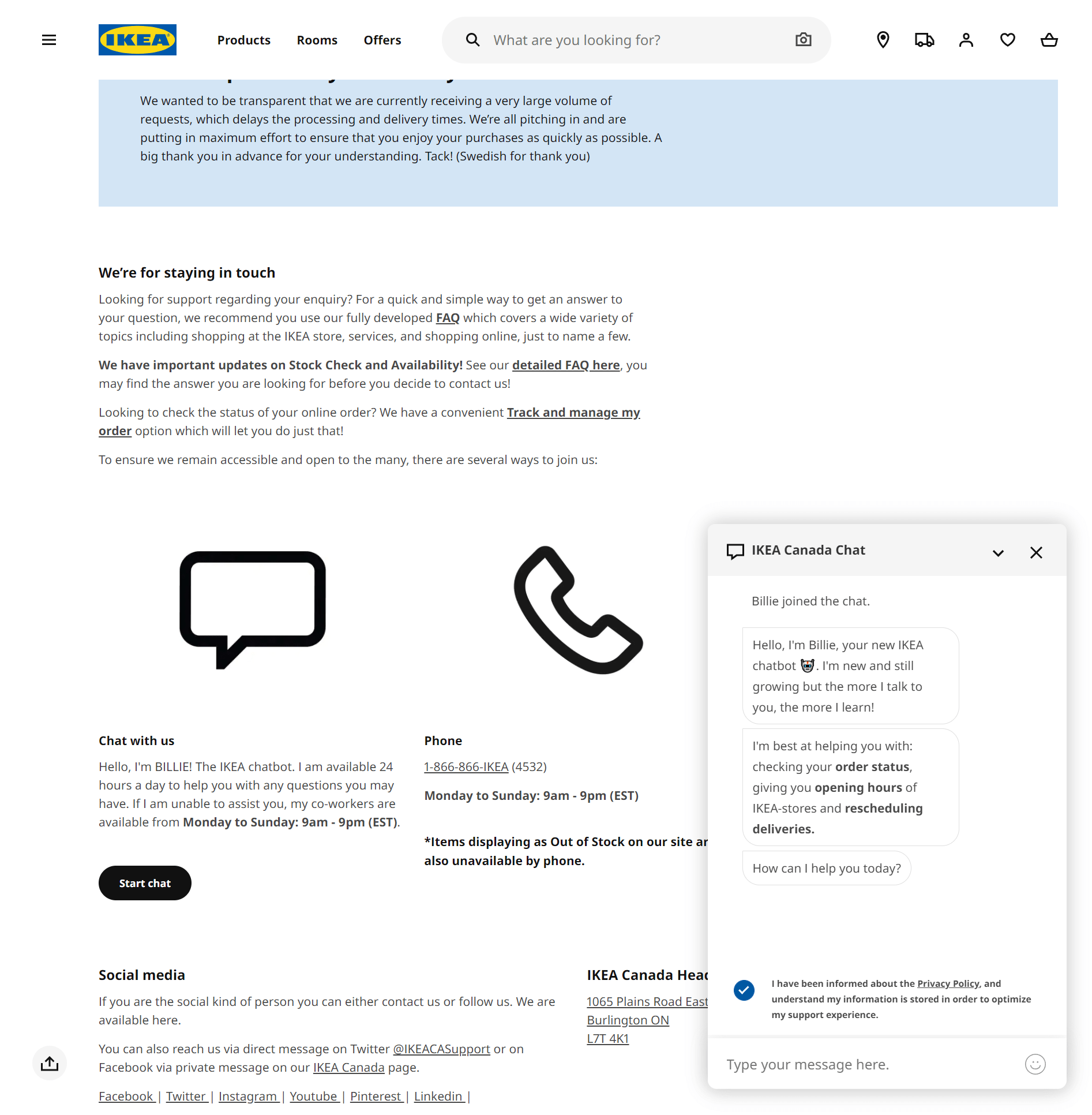
But let’s look at the larger picture:
- The purchase rate of omnichannel campaigns is 287% higher than single-channel campaigns (Omnisend).
- Customers are channel-agnostic. They expect businesses to be available on any channel that’s convenient for them (Gartner).
- The more channels in your channel mix, the better. More channels mean more convenience for your customers. More prospects mean more ROI. At least, that’s what we can learn from this analysis of 6,000 Effie-award-winning campaigns.
What to do about it
You can offer omnichannel experiences in three key areas.
The first one is the product (or service). For example, Ahrefs is primarily a SaaS platform, but we also extend some of the product features to plugins, such as our SEO Toolbar for Chrome and Firefox and our free SEO WordPress plugin. This way, we can provide data contextually and make things more convenient for our users.
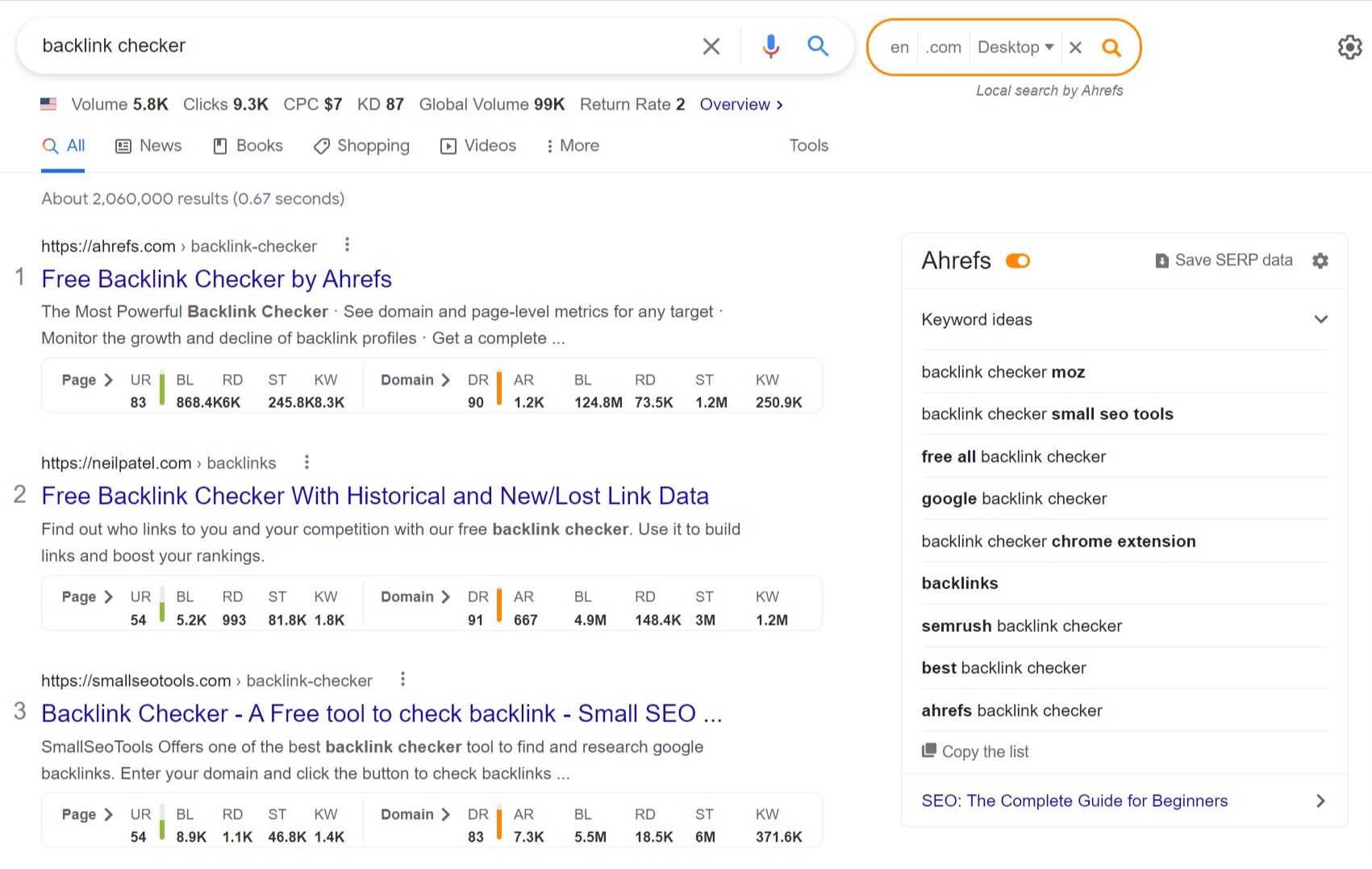
Ahrefs’ SEO Toolbar allows you to see SEO-related data directly on search engine results pages.
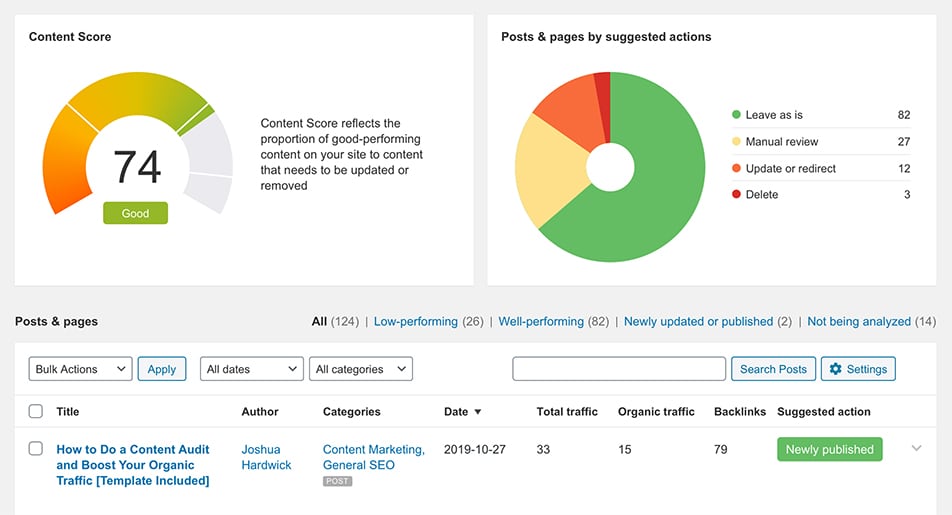
Ahrefs’ WordPress plugin performs automatic content audits combining data from Google Analytics and Ahrefs.
The second area is customer support. Think about expanding the channels that can be used to reach your business. Don’t blame customers for using the “wrong” support channels. Instead, be prepared for any questions on all channels.
Conversational marketing solutions, such as live chats, are something more and more companies invest in. If you look at the data, it makes perfect sense:
- 82% of consumers expect an immediate response to sales or marketing questions (Hubspot).
- 79% of companies say that live chat has had positive results for customer loyalty, sales, and revenue (Kayako).
- Conversations inside Facebook Messenger between companies and customers have a 30% higher conversion rate than retargeting ads (Facebook).
The third area is promotion. Like the aforementioned Effie study has proven, the more channels, the better.
For example, we promote Ahrefs Webmaster Tools through many channels: Twitter, YouTube, Google Ads, various kinds of sponsorships, and more. We also try new ones whenever possible. (Recently, we have used Brave Ads and Quora Ads). Here’s an example of a video ad.
Wherever you look, you can see the same pattern:
- 79% of people say they’ve been convinced to buy or download a piece of software or app after watching a video (Wyzowl).
- YouTube is the second-most visited website in the U.S. by organic traffic (Ahrefs).
- 91% of marketers feel the pandemic has made video more important for brands (Wyzowl).
- Video is the primary form of marketing media being created in 2021, followed by blogs (used by more than half of marketing teams), and infographics (Hubspot).
Video proves to be great for users and businesses. It’s really hard to find a sound reason not to invest in video marketing. This is especially if your product is better shown in video than explained in written content.
What to do about it
If you’re at the beginning of your video marketing journey, the video below explains how to set up for success in this type of marketing even if you lack professional equipment, proficiency in English, or experience in front of the camera.
https://www.youtube.com/watch?v=QCgDIhvFkCM&list=PLvJ_dXFSpd2tsn8vwEmhFM0McBH4PhEty
Need more? Make sure to check out our playlist on the subject. We’ll show you how to make the best of YouTube Ads and do video SEO and YouTube SEO to send consistent, free traffic to your videos.
According to Harvard Business Review, data science is “the sexiest job of the 21st century.” It also added:
If companies sit out this trend’s early days for lack of talent, they risk falling behind as competitors and channel partners gain nearly unassailable advantages.
That article is from 2012. Some 10 years later, data scientist is #2 in Glassdoor’s 50 Best Jobs in America for 2021 report. And #1 is Java developer, with a comparable job satisfaction degree but about a $20k lower median base salary.
The data science trend is so impactful that it has left its mark on marketing. This study from Altimeter says that from a set of 11 skills, data analysis is the most desired skill among digital marketers.

Source: Prophet.
And when we look at some data analysis courses, we can see that they are already being customized for marketers:

The courses cover many aspects, from advanced spreadsheet skills to programming in Python and R. Just one look at these courses, and we can see complex marketing problems that data analysis can help solve: customer churn, multifaceted customer data, sentiment analysis, campaign performance, etc.
What to do about it
Step 1 is to connect to quality data sources. There is a dedicated analytics tool for every marketing channel out there.
For example, if you want to take advantage of organic search, you will need a premium SEO tool like Ahrefs. Such a tool is your ticket to the vast pool of global search demand and backlinks data.
With the right SEO tools, you can also peep at your competitors’ data and see where you can improve.

Among many features, Ahrefs’ Content Gap tool allows you to perform content gap analysis and see which keywords your competitors rank for but your website doesn’t.
The second step is learning data analysis skills.
Basic skills include mastering relevant spreadsheet formulas, understanding statistics, and understanding how your data is collected. If you think you can benefit from more advanced skills, invest in learning SQL, Python, or R.
That said, marketing analytics software can already perform a lot of data cleaning, analysis, and visualization for you. Particularly, the latest marketing automation technology has become quite remarkable.
Solutions like Blueshift or Bloomreach can take all your customer data points, merge them into one database, and then allow you to design omnichannel communication workflows triggered based on customer characteristics, actions, and even AI predictions.
Can you point to a moment in time when buying something online was as easy, fast, and essentially frictionless as it is today?

It’s obvious: Customers are more likely to make a purchase when companies make it easy for them.
Let’s look at some more examples:
- These days, you can buy new and used cars 100% online.
- E‑grocery companies declare deliveries to be as fast as 15 minutes.
- Investing in the stock market is a breeze nowadays with apps like Robinhood or eToro.
- Klarna, whose tagline is “the shortcut to shopping,” allows you to buy something online even if you don’t have the money at that moment.
- Last but not least, think how disappointed you would be A.D. 2022 if a SaaS product didn’t have a free trial or some form of “free” element to it.
What to do about it
Decrease friction for any form of conversion action that you want the user to take. Be it signing up for a newsletter, signing up for a trial, or even making a purchase. As you can see above, businesses can make more money when they make the money flow easier.
But before you do, take a moment to think about whether you may need some kind of “friction.” Here are a few examples:
- Friction from a lead generation perspective – For instance, you may find that gated content results in more qualified leads with more data points available.
- Friction as a security measure – For example, before I took that screenshot from Amazon, I needed to go through a two-step verification process to log in to my account.
It’s been two years into the pandemic, and we’re all living in the “new normal.” That said, it’s reasonable to wonder if remote work should stay for good.
Well, according to a couple of statistics on the recent global remote work phenomenon, it seems that the transition to home offices was mostly successful.

Source: PWC.
What’s more, remote work proved to have its upsides.
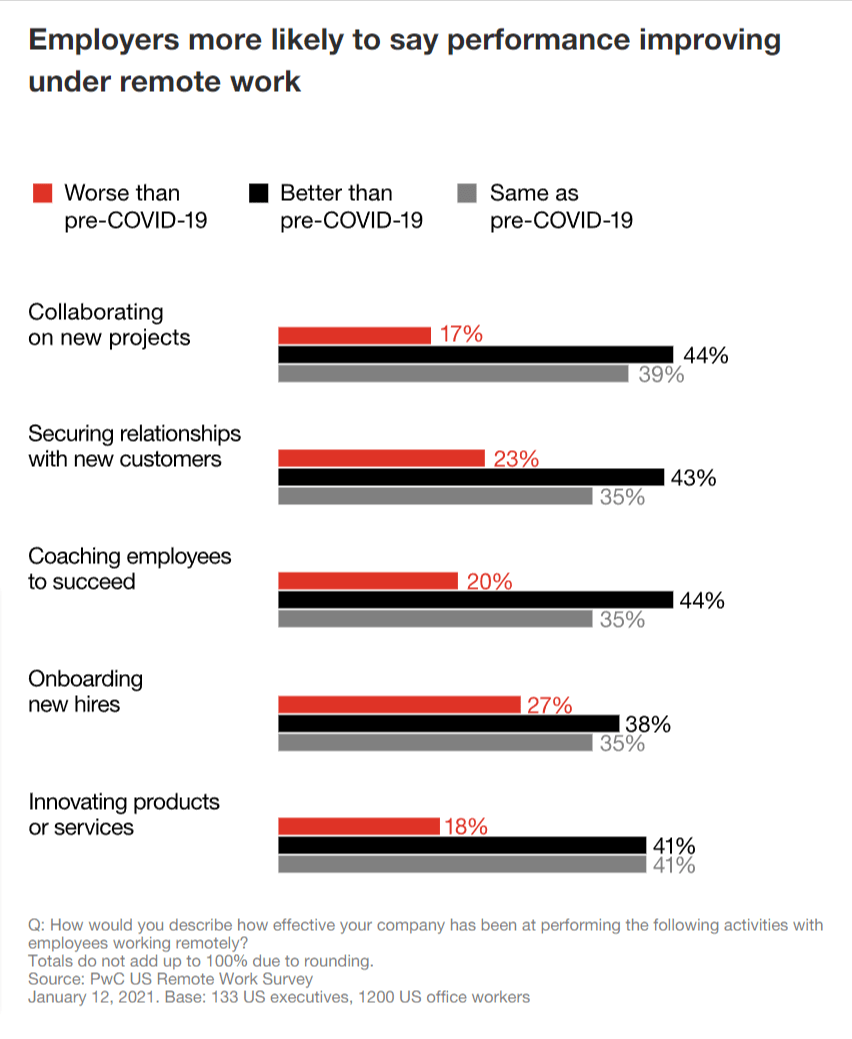
According to a Stanford study of 16,000 workers over nine months, a work-from-home arrangement increases productivity by 13%. Reason: more convenient working environment, fewer breaks, and sick days.
Here are a few more benefits:
- Lower cost of employment
- Better mental health
- Access to better job options
- More employee loyalty
- Lower commuting costs (and more time saved on traveling)
If you’ve worked remotely, I’m sure you have your own pros and cons.
On the whole, though, employees are eager to continue working remotely or semi-remotely. According to FlexJobs’ 10th Annual Survey conducted between July and August 2021, an astounding 97% of workers desire some form of remote work—be it fully remote or hybrid.
And according to another study, over half of the employees want to work at least three days a week remotely.
Thus, it appears that remote work is here to stay.
What to do about it
The overall consensus seems to be that in order to adapt to this situation, companies will employ a hybrid model: Staff will spend some days in the office and some days at home.

And another study by Mercer confirms this sentiment: 70% of companies say they are planning to adopt the hybrid model.
In the above statistics, marketers are no exception. Who knows? Maybe marketers are even more likely to adopt the remote model. After all, we don’t often experience client-facing situations. And even if we do, those can be handled online. Also, I guess most of the tools we use for work are cloud-based.
So, dear marketers, you will likely see yourselves working remotely or semi-remotely in the coming years. There is a lesson here for employers also: Don’t be surprised if the people whom you work with expect some kind of remote work.
To wrap things up, let me also share a few tips on how to make the most of remote work based on the research I’ve seen so far:
- Avoid the always-on mentality – This is advice both to employers and employees. Many people report that while working from home, they feel like they’re constantly working. This eventually leads to lower productivity, lower satisfaction, and professional burnout.
- Use the right tools – For example, here at Ahrefs, some of us are remote-only workers from all around the world, while some are based in the Singapore office (but work remotely from time to time). So our work model is hybrid in a way. But all of the tools we use are remote-work friendly. Our staff can log in wherever and whenever they need.
- Consider more in-office time for new hires and inexperienced workers. They may need the support and a taste of the company vibe.
- 87% of employees say the office is important for collaborating with team members and building relationships (PWC). That’s right—having friends at work is that important. We just have to get used to chatting with people over the internet rather than in person.
Final thoughts
The future is always uncertain. Marketers can rarely afford the luxury to wait things out. So the only other option to cope with uncertainty is to start taking action. And hopefully, your path to success will become brighter as you go.
I hope the above list of digital marketing trends provided some insight into a couple of smart moves you can make in marketing in the near future.
If you have questions about marketing in 2022 or answers (even better), let me know on Twitter.
